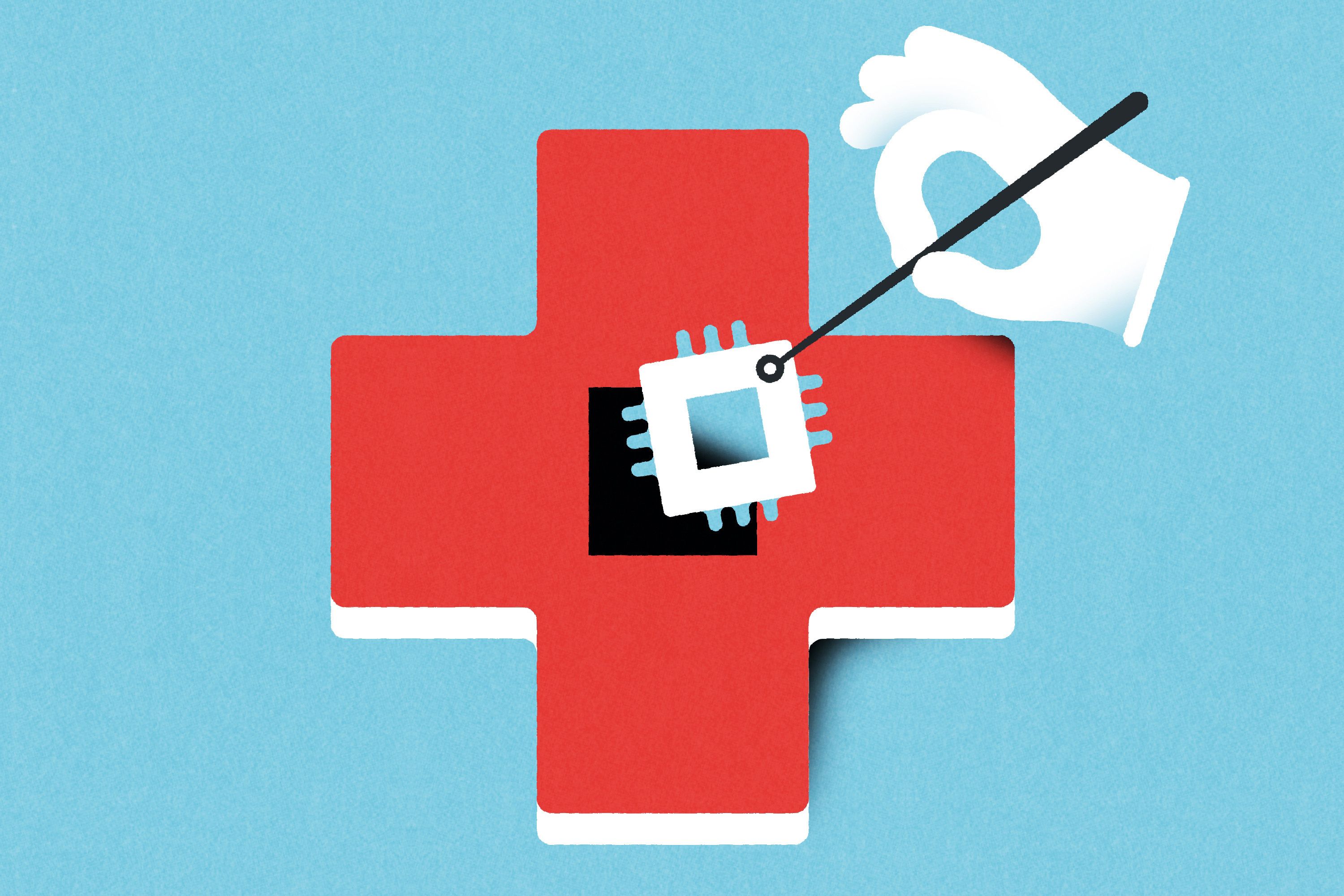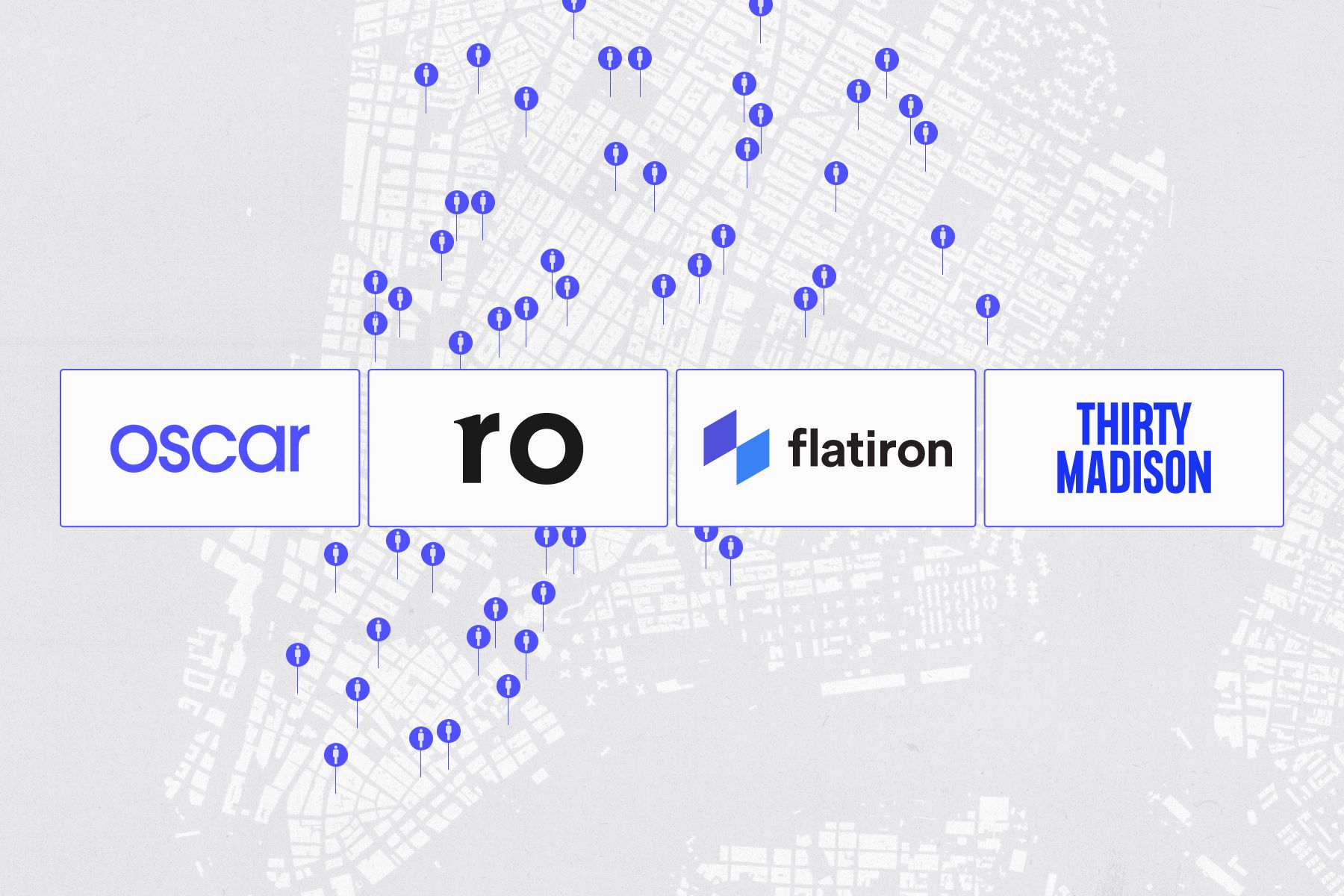Healthcare's "Why Now" Moment

We are longtime fans of vertical industry-focused tech companies and increasingly are focusing on vertically-focused AI solutions as well.
Verticals are often transformed in fits and starts with periods of relative inactivity followed by a cambrian explosion when the world shifts and adoption of new technologies takes off.
Healthcare, a $5 trillion market in the US (18% of GDP), is undergoing one of those moments. When it comes to the “Why Now,” we observe five critical drivers:
- Changing consumer preferences
- The emergence of telehealth
- Blockbuster drug discoveries
- AI adoption
- An aging population
These topics will become increasingly important over the coming years as healthcare seeks to address rising costs and labor shortages – two challenges which can be combated by technology adoption.
Having spent considerable time in this space alongside Martin, Nina, Damir, and Susana, we can say with conviction that now is the moment for the world’s most ambitious founders to take on one of the largest, most complex, and most significant verticals: Healthcare.
Changing Consumer Preferences
From clothing and apparel, to dining, hospitality, cosmetics and beauty products, fitness, and drugstore goods, consumers are voting with their dollars for products and services which promote health and wellbeing.
McKinsey estimates that the global consumer wellness market represents $1.8 trillion, with $480 billion of that coming from the U.S. alone. Per an August 2023 survey, they estimate 82% of US consumers consider wellness a top or important priority in their everyday lives which has led to greater interest in spending on appearance, health, fitness, nutrition, sleep, and mindfulness, especially among Millennials and Gen Z.
Generally consumers are beginning to prioritize healthspan in addition to lifespan, leading to a surge of interest in health-related products, services, and content. Outlive by Peter Attia, for instance, has been a New York Times bestseller for over 50 weeks.
The shift in consumer preferences was certainly impacted by COVID-19, a crisis which increased overall awareness and scrutiny around public health, making people more health conscious and open to behavioral change. Against the backdrop of COVID-19, the world also became more aware of mental health disorders, anxiety, isolation, and depression.
Also driving consumer preference for health and wellness is the rise of social media, and specifically of short-form video content like TikTok, Instagram Reels, and YouTube Shorts. With so many creating or consuming video content, appearance has become a top priority for the average consumer.
Boulevard is well acquainted with these trends. Boulevard offers salons, barbers, medspas, massage parlors, spas, and salons an all-in-one platform to book, intake, and welcome clients, take payment, and remain in touch for subsequent visits. These end markets are growing substantially - the medspa industry for example is projected to grow north of 12% per year through 2026.
While Boulevard powers predominantly aesthetically-focused in-person services, telehealth is enabling other categories to thrive in a fully digital setting.
The Emergence of Telehealth
Convenience has been a powerful driver for consumer technologies over the past two decades. Consumer applications like social media, music streaming, food delivery, and ride hailing have taken off in large part because they delight consumers by giving them greater choice and convenience.
For many years, healthcare services have been frustratingly inconvenient given long, anxiety-inducing wait times to book appointments and receive care at out of the way locations.
On the one hand, there have been many brick and mortar disruptors within healthcare services who understand these consumer pain points and are creating next-gen retail footprints across categories like dental, dermatology, optical, urgent care, and veterinary, among others. Their goal is to create compelling, tech-forward, aesthetically pleasing spaces.
On the other hand, COVID-19 served as a major catalyst for telehealth adoption. When it became physically impossible to see doctors in person, virtual became the best option. Now that the pandemic has abated, many of those behaviors have stuck.
Prior to COVID-19, telehealth adoption was scant because of a lack of patient awareness, limited insurance coverage, and lack of well known tech platforms offering high quality clinicians. Fast forward to today and virtual options have become more prevalent, offering high-quality, reimbursable care for patients across a number of categories including diet & nutrition, cardiology, GI, physical therapy, dermatology, mental therapy, diabetes, fertility, and maternity care, among others.

These virtual options are a win, win, win. Patients receive high quality and convenient care, healthcare providers see greater calendar utilization and treat patients in a manner that’s convenient for them, and insurance companies get access for their members to a wider variety of care options which should ultimately lead to healthier members and improved medical loss ratios.
In the mental therapy space, Grow Therapy, Headway, and Alma are three among many companies growing quickly and expanding access to reimbursable mental therapy, which has historically been a referral-driven, cash-pay, and in-person industry with limited supply of trained therapists, especially in rural areas, to meet a boom in demand for mental therapy services.
Women’s health and maternity are also categories where virtual care is emerging as a more convenient option for mothers and families. Companies like Maven and Pomelo are two leaders among many which offer compelling care options.
In the diet and nutrition space, Nourish highlights the benefits of telehealth. Nourish offers patients virtual, high quality and personalized nutrition assessments, ongoing care, between-session support, and meal tracking. Virtual care delivery opens up the aperture to a wider market of patients, many of whom want this care but would be unlikely to visit a hospital or private practice in person. Nourish employs dietitians, offering flexibility, competitive compensation and benefits, community, and credentialing support.
GetHarley is another emerging leader in the virtual care space which is transforming the dermatology sector by offering patients access to a network of 1000+ aesthetic doctors, plastic surgeons, and dermatologists for personalized, online skin consultations to treat conditions ranging from acne to fine lines, pigmentation, and healthy aging. After the initial consult, patients get treated with a curated at-home regimen of medical grade products and continuous care via follow up appointments.
There are analogues between healthcare services, e-commerce, and financial services. In the latter two cases, consumers have shown a preference for digital vs. traditional brick & mortar. We expect that healthcare will evolve similarly over time, recognizing that it’s not possible to provide all services virtually.
Blockbuster Drug Discoveries
Pharmaceutical research & development is geared towards discovery of “blockbuster” drugs which can generate $1 billion or more in annual sales. These drugs, which typically serve large populations, include household names like lipitor for high cholesterol, humira for inflammatory conditions, and keytruda for cancer.
Over the past few years Glucagon-like peptide-1 agonists, or GLP-1’s, have emerged as mega blockbusters. Novo Nordisk’s Ozempic was approved in December 2017 by the FDA for adults with Type 2 diabetes as a weekly injection to reduce blood sugar. When weight loss emerged as a side effect, Novo Nordisk developed Wegovy with the same active ingredients which received approval in June 2021 to treat chronic weight management.
Eli Lilly also received FDA approval, first in May 2022 for Monjourno to treat diabetes, and then in November 2023 for Zepbound to treat chronic weight management.
These drugs have been massively successful. Novo Nordisk recently reported its full year results, generating approximately $18 billion in GLP-1 revenues in 2023, up nearly 50% YoY versus 2022. Mounjaro generated $5B of revenues in 2023, up from under $500M in 2022.

GLP-1’s have the potential to radically transform the healthcare landscape as one of the core underlying drivers of chronic disease is obesity and poor nutrition. Today over 40% of Americans are clinically obese, while an additional 30% can be considered overweight. J.P. Morgan estimates that over 30 million Americans will be GLP-1 users by 2030.
With Novo Nordisk, Eli Lilly, Pfizer, and AstraZeneca pursuing oral GLP-1’s (as opposed to the injectables that are currently on the market), the race is officially on to discover the next blockbuster. It’s also likely that AI will serve as a catalyst for further drug discovery.
AI Adoption
AI applications work best when large language models are trained on specific, well-labeled data sets. Healthcare should serve as an ideal end market for AI.
When you consider the full healthcare workflow, there are opportunities for AI across care delivery, imaging and diagnostics, drug discovery and clinical trials, surgery, clinical administrative workflows, medical coding and reimbursement, revenue cycle management, contact centers, and remote patient monitoring.
Ultimately, AI will help ease the burden of clinical and administrative teams alike. A few examples:
- Radiology - Radiologists can use AI to summarize impressions or even to autonomously analyze images
- Primary care - Physicians can use AI medical scribes like DeepScribe to create AI-generated notes during patient visits
- Coding - Medical coding can be completed automatically and with high accuracy by AI as opposed to manually by people
- Drug discovery - Drug discovery could be augmented or replaced by AI versus manual trial and error
Unsurprisingly, AI leaders like OpenAI, Microsoft, NVIDIA, and Google are all pushing heavily into healthcare via partnerships, acquisitions, and product releases.
We expect AI will be a powerful force within healthcare over the coming years, helping to create new, compelling care models for patients, greater efficiencies for physicians, and opportunities for payers to reduce cost and delight members.
Aging Population
Per the US census, the population of adults aged 65 and above reached 56 million in 2020 or 17% of the population, up from 13% of the population in 2010. By 2040, it’s estimated that the population of older adults will reach 81 million or 21% of the population.
The aging population, sometimes referred to as the “silver tsunami,” is a global phenomenon which is sure to impact many aspects of society. Older adults have complex care needs including chronic conditions. Care can be expensive and unaffordable for taxpayer-funded programs like Medicare and Medicaid, as well as for individuals paying out-of-pocket. Medicare spend alone is approaching $1 trillion and continues to grow in excess of GDP.

Given the mix shift towards an older population, payers recognize they must incentivize preventative care including screening and early detection, diet and nutrition, activity, patient education, and community-based care, in order to curb costly expenditure in the future.
While healthcare costs are particularly challenging in the US, populations are aging globally. Against that backdrop, technology has the potential to serve aging populations with higher quality and more affordable care.
UK-based Birdie, for example, is an all-in-one software platform serving homecare agencies with products for care management, rostering, finance, auditing, and patient communication. 73% of Birdie customers save 7-15 hours per week on day-to-day operations, which makes them more efficient and ultimately more effective for patients.
Technology has the potential to impact many areas serving older adults. We’ve seen software serving assisted living facilities and homecare, pendants and hardware wearables for fall monitoring, aging clinics, virtual fitness classes, retirement-focused financial products and services, medicare enrollment, and many other opportunities for tech solutions for this historically underserved population.
Which areas of healthcare are you watching closely? We're excited to hear from you @IndexVentures.
Note: Birdie, Boulevard, DeepScribe, GetHarley, and Nourish represent Index portfolio companies.
Published — March 28, 2024

